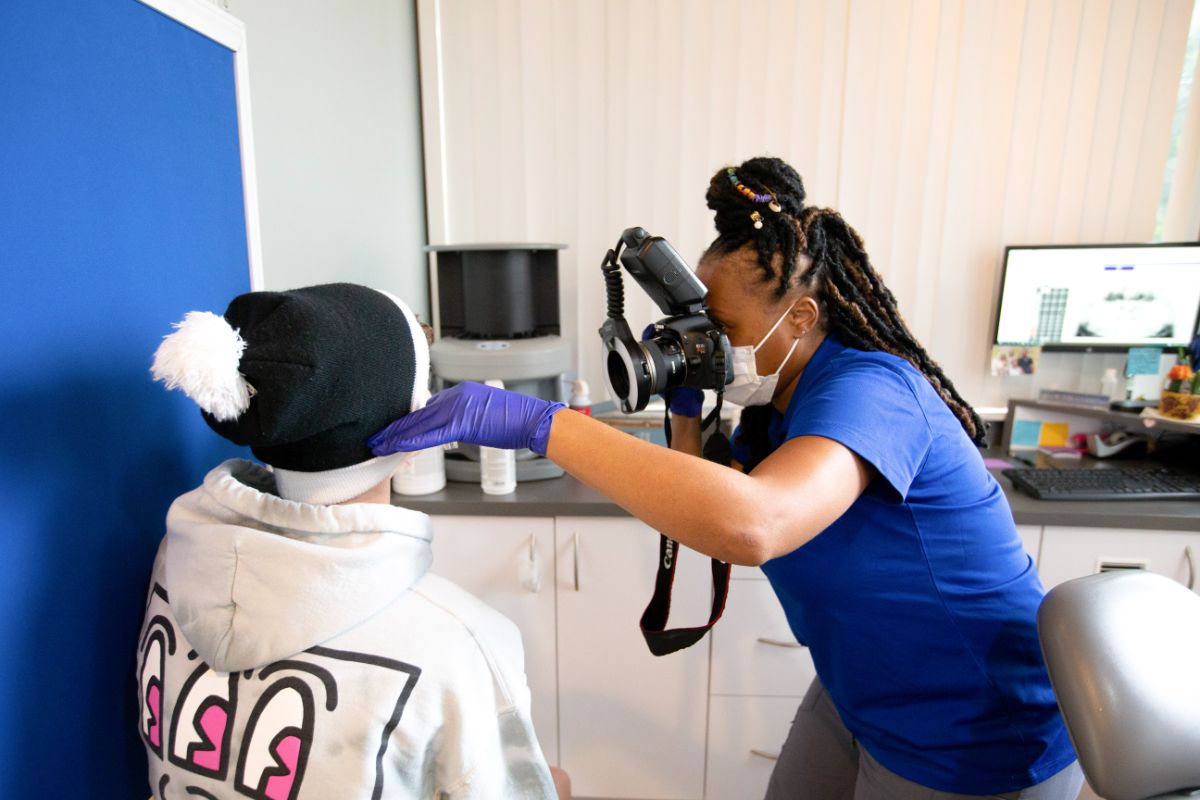If you recently learned that your child would benefit from a palatal expander, you may be wondering what that is and why it’s necessary. Even the name can sound a little intimidating if you’re not familiar with this common orthodontic appliance! As orthodontic specialists, Dr. Ross and Dr. Rothenburg have the experience to manage tooth movement and guide facial development. They’re able to accomplish this using a variety of orthodontic appliances, including palatal expanders. Let’s take a closer look at what palatal expanders are and how they can improve your child’s smile!
What is a palatal expander? How does it work?
A palatal expander is an orthodontic device designed to capitalize on the changes as a child’s teeth and jaw develop. They help create more space in the mouth by gradually widening the upper jaw. This is possible because the upper jaw develops as two separate halves that don’t fully fuse until puberty. Each half can be gently separated and stabilized with a palatal expander until then.
Palatal expanders consist of two pieces that connect in the middle with a screw. They fit over a few top teeth in the back of a child’s mouth and are activated by turning the screw in tiny increments each day with a special key. How often you turn the screw will vary from case to case and depends on several factors, including the type of expander being used, the age of the patient, the expansion goals, and more. The most common protocol is one turn a day up to a maximum number of turns. Each time the expander is turned, the screw is opened one-quarter of a millimeter.
This turning creates tension at the junction of the two palatal bones, gradually moving them apart. Once the desired amount of expansion is achieved, the appliance will usually be kept in place for a few more months so that new bone can form in the gap and stabilize the expansion.
Generally speaking, most patients will wear a palatal expander for about 9 to 12 months in total. We’ll normally recommend using one when the upper jaw, or maxilla, is too narrow relative to the lower jaw. The upper jaw needs to fit outside the lower jaw to function appropriately. If the upper jaw is too narrow, the lower jaw won’t fit inside it. This can cause it to shift to one side to achieve a more comfortable bite, a condition commonly referred to as a functional crossbite.
Crossbites may result in temporary facial asymmetry that we can fix if the upper jaw is made the correct size through palatal expansion. After expansion, the lower jaw will swing back to a more central position. Normalizing the upper jaw through palatal expansion can also positively affect opening up the nasal and pharyngeal airway passages, which allows for increased tongue space and room for the erupting dentition. The upper jaw will have more room for the teeth growing underneath the gum tissue in the bone.
Keep in mind that palatal expanders are a time-sensitive treatment that works with the teeth and jaws as they grow. If these issues are not corrected promptly, the lower jaw can grow asymmetric. After a child’s jaw has stopped growing, Fixing this may require surgery or other invasive treatment.

Who benefits from palatal expanders?
Palatal expanders are traditionally used between the ages of 7-14. They can benefit children in this age range by:
- reducing or eliminating overcrowding—expanders create space for all of a child’s upper teeth to erupt in the correct positions
- reducing the risk of developing impacted teeth—when an unerupted tooth is blocked by other teeth, we can create room for it to emerge by widening the upper jaw
- correcting a crossbite—the upper teeth should close around the outside of the lower teeth, but a narrow palate can cause the upper teeth to bite inside the lower teeth. An expander can correct this before serious asymmetrical jaw growth occurs, restoring facial symmetry.
Other benefits of expanding the upper jaw with a palatal expander include:
- Improving the aesthetic appearance of their smile.
- Limiting the need for tooth extraction.
- Reducing the total treatment time if a child is fitted for braces or clear aligners later on.
What are the different types of palatal expanders?
The type of palatal expander that’s right for your child will depend on their age and the unique shape of their palate. There are fixed and removable options available, and your child’s expander will be custom-made to complement their natural palate shape and size. The most common types of palatal expanders include:
Rapid palatal expander
The rapid palatal expander, or RPE, is standard. It has a center screw with four branches attached to the paralleled back teeth of the upper jaw. You’ll be provided with a small key to activate the center screw each day, turning it based on your orthodontist’s recommendation. Over time, this will widen the palate to the desired size and shape.
Removable palatal expander
The removable palatal expander is also common when treating children. It’s often used in cases that need only a small amount of expansion. The device resembles a clear retainer but it also contains a center screw. This center screw works similarly to the RPE and requires the same gentle daily expansion for around 3-6 months.
Mini-implant assisted rapid palatal expander
If your child begins treatment early enough, it’s unlikely they will need a mini-implant assisted rapid palatal expander (MARPE.) These are typically used for older teens and young adults who require more powerful pressure to reshape their palate.
A MARPE includes two to four mini-implants placed on parallel points of the palatal bones. There is also a center screw that works similarly to other palatal expanders, but instead of applying pressure to the teeth, it applies pressure directly to the palatal bones.

Give your child’s smile the best start at Orthodontics of South Miami
A child’s mouth changes rapidly. There’s a lot of shifting and moving around as baby teeth are lost and the permanent teeth grow in. If there’s a misalignment or other issue present, it’s often easier to treat while the jaw and palate are still developing. Experienced orthodontists like Dr. Ross and Dr. Rothenburg can identify and correct any potential problems using the appropriate orthodontic tools, including palatal expanders.
If you’re looking to improve your child’s oral health, we’d love to meet you both and take a look at how their smile is developing! Get in touch today to schedule a FREE consultation with our Miami office.
